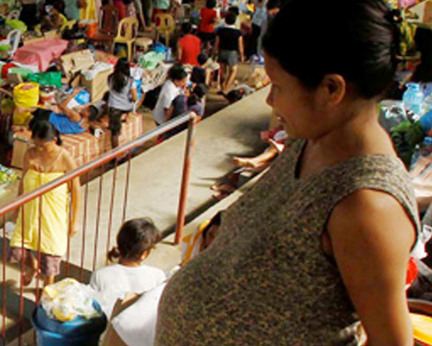The Commission on the Status of Women (CSW58) ended officially in the wee hours of Saturday morning when negotiators agreed to a final outcome document. Though several issues were up for debate, perhaps one of the most broad-ranging and difficult points of contention were around sexual reproductive health rights. There were three main sticking points for negotiators this year: funding; the link between violence against women and reproductive health rights; and the connection between poverty reduction and reproductive health.
How the outcome document navigated this difficult terrain will almost certainly influence how sexual and reproductive health issues will be broached when the international community decides on the successor agreement to the Millennium Development Goals in the coming year. The outcome document from the CSW will almost certainly serve as a guide to the intergovernmental panels which will formulate the post-2015 framework and Sustainable Development Goals (SDGs) beginning this September. The panels will use documents from various conferences and Open Working Groups as a guide and agenda for their meetings. This means that the results of the CSW could have an outsized influence on how these issues are handled in the post Millennium Development Goals international development agenda.
The following sections, from the Agreed Conclusions, are the most important items addressing these three critical and contentious issues.
Conclusion #23 states:
“concern about the significant gaps in funding that remain and the magnitude of unmet need for all sexual and reproductive health care services.”
What this means:
By addressing the most fundamental of development issues, money, negotiators are indicating to the builders of the post-2015 framework that sexual and reproductive health rights should be accounted for in any effective Sustainable Development Goal budget.
Conclusion #24 states:
“stresses that structural gender inequalities and violence against women and girls undermine effective HIV responses and the need to give full attention to increasing the capacity of women and adolescent girls to protect themselves.”
What this means:
According to the World Health Organization (WHO), HIV infection and violence against women are related in many ways. In connecting the two in the outcome document, intergovernmental panels will see see that sexual and reproductive health rights are multi-faceted – part of maternal health (MDG 5), and HIV/AIDS infection (MDG6), as well as under the umbrella of gender equality (MDG 3). The better they understand sexual and reproductive health rights, the greater the chance of some real progress in the post-2015 framework.
Conclusion #42 (A)(k) States:
Address the multiple and intersecting factors contributing to…equal access to…women’s and adolescent girls’ access to health including sexual and reproductive health care services, and women’s equal access to full and productive employment and decent work, women’s full participation and integration in the formal economy, equal pay for equal work or work of equal value, and equal sharing of unpaid work;
What this means:
One of the more positive points in the Agreed Conclusions, the above text effectively ties poverty reduction and employment to a woman’s ability to protect her sexual and reproductive health rights. It highlights the need for ‘unpaid care work’ to be treated in the post-2015 framework as a human rights issue, but also a deterrent to real economic growth in the least developed countries.
Not an easy task, but including these sections in their Agreed Conclusions, CSW58 negotiators have sent the intergovernmental panels the message that addressing the three issues of funding, violence against women, and unpaid care work are critical to overall progress on sexual and reproductive health rights of women.
The outcome document will certainly play a role in determining the post-2015 framework and SDGs and will likely lead to sexual and reproductive health rights being addressed more thoroughly than in the MDGs.
